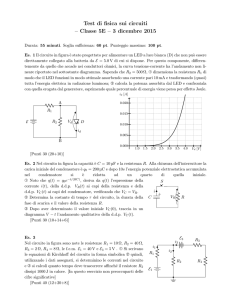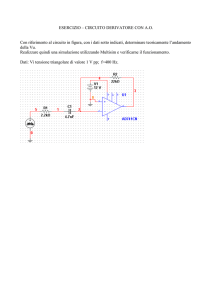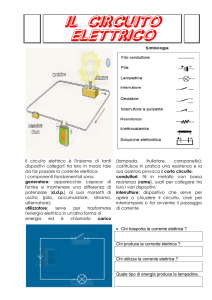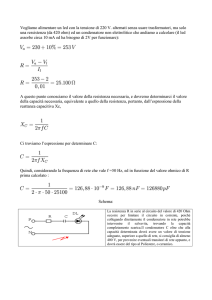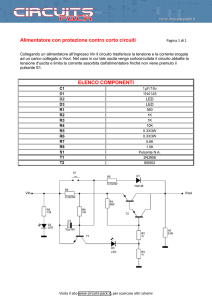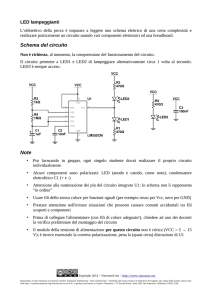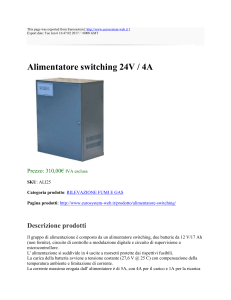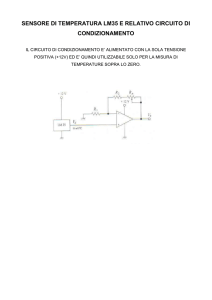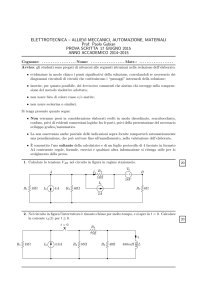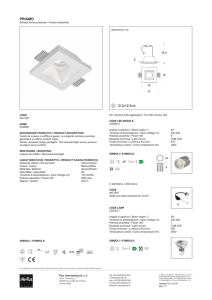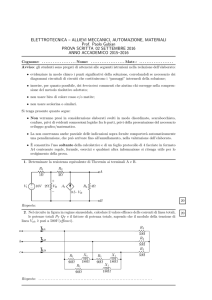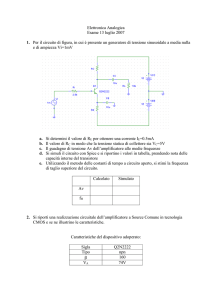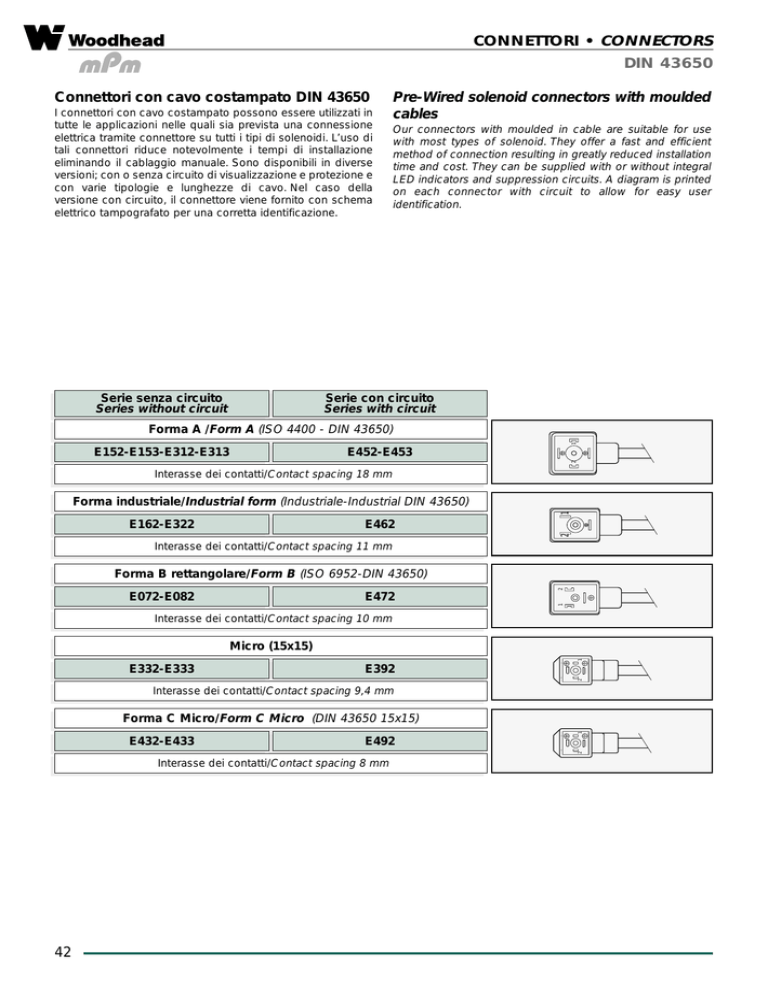
CONNETTORI • CONNECTORS
DIN 43650
Connettori con cavo costampato DIN 43650
I connettori con cavo costampato possono essere utilizzati in
tutte le applicazioni nelle quali sia prevista una connessione
elettrica tramite connettore su tutti i tipi di solenoidi. L’uso di
tali connettori riduce notevolmente i tempi di installazione
eliminando il cablaggio manuale. Sono disponibili in diverse
versioni; con o senza circuito di visualizzazione e protezione e
con varie tipologie e lunghezze di cavo. Nel caso della
versione con circuito, il connettore viene fornito con schema
elettrico tampografato per una corretta identificazione.
Serie senza circuito
Series without circuit
Pre-Wired solenoid connectors with moulded
cables
Our connectors with moulded in cable are suitable for use
with most types of solenoid. They offer a fast and efficient
method of connection resulting in greatly reduced installation
time and cost. They can be supplied with or without integral
LED indicators and suppression circuits. A diagram is printed
on each connector with circuit to allow for easy user
identification.
Serie con circuito
Series with circuit
1
Forma A /Form A (ISO 4400 - DIN 43650)
E452-E453
2
E152-E153-E312-E313
Interasse dei contatti/Contact spacing 18 mm
1
Forma industriale/Industrial form (Industriale-Industrial DIN 43650)
E462
2
E162-E322
Interasse dei contatti/Contact spacing 11 mm
2
Forma B rettangolare/Form B (ISO 6952-DIN 43650)
E472
1
E072-E082
Interasse dei contatti/Contact spacing 10 mm
1
Micro (15x15)
E392
2
E332-E333
Interasse dei contatti/Contact spacing 9,4 mm
1
Forma C Micro/Form C Micro (DIN 43650 15x15)
E492
2
E432-E433
Interasse dei contatti/Contact spacing 8 mm
42
CARATTERISTICHE TECNICHE • TECHNICAL FEATURES
Specifiche sui tipi di cavi / Cable types
Tipo di cavo Codice
Cable type
Code
Caratteristiche
Features
N° conduttori
Stranding
Raggio di curvatura
Bending radius
0.5 mm2 = 15 x 0.20
0.75 mm2 = 21 x 0.20
1 mm2 = 28 x 0.20
15 X Ø esterno
15 X outside Ø
PVC
N
Adatto ad applicazioni generiche con caratteristiche di buona resistenza
all’acqua, ma scarsa resistenza all’olio. Application general purpose
cable which has good resistance to water, but usually poor oil
resistance.
CEI
I
Approvato IEC332 - 2A, non propagante alla fiamma e
autoestinguente. Offre una limitata resistenza agli olii minerali.
Approved to IEC 332-2A, flame retardant and self extinguishing.
Limited resistant to mineral oils.
0.5 mm2 = 28 x 0.15
0.75 mm2 = 42 x 0.15
1 mm2 = 32 x 0.20
10 X Ø esterno
10 X outside Ø
PUR
P
Offrono buona resistenza agli olii e agli agenti chimici. Può dilatarsi se
immerso in acqua. Offer good resistance to oil and chemicals. Can swell
when constantly immersed in water.
0.5 mm2 = 28 x 0.15
0.75 mm2 = 42 x 0.15
1 mm2 = 32 x 0.20
10 X Ø esterno
10 X outside Ø
PVC CSA-UL
A
Approvato CSA-UL 2661, adatto ad applicazioni generiche con
caratteristiche di buona resistenza all’acqua, ma scarsa resistenza
all’olio. Approved to CSA-UL 2661, application general purpose cable
which has good resistance to water, but usually poor oil resistance.
20 AWG = 32 x 0.15
18 AWG = 52 x 0.15
10 X Ø esterno
10 X outside Ø
PUR CSA-UL
B
Approvato CSA-UL 20668, offre una buona resistenza agli olii e agli
agenti chimici. Approved to CSA-UL 20668, very good resistance to oil
and chemicals.
20 AWG = 32 x 0.15
18 AWG = 52 x 0.15
10 X Ø esterno
10 X outside Ø
mPm code
I
I
I
I
P
P
P
F
A
A
A
A
A
B
B
B
B
I
I
P
P
P
A
A
A
A
B
B
B
B
I
I
F
N
N
N
N
N
N
N
N
N
N
2
2
2
2
2
2
2
2
2
2
2
2
7
2
2
2
2
3
3
3
3
3
3
3
3
3
3
3
3
3
4
4
4
2
2
2
3
3
3
3
4
4
5
Materiale
Material
Colore
Colour
N°
Cond.
Sezione
Section
PVC CEI 2022 II O.R.
PVC CEI 2022 II O.R.
PVC CEI 2022 II O.R.
PVC CEI 2022 II O.R.
PUR - BLEND
PUR - BLEND
PUR - BLEND
CNOMO
PVC CSA/UL 2661
PVC CSA/UL 2661
PVC CSA/UL 2661
PVC CSA/UL 2661
PVC CSA/UL 2661
PUR CSA/UL 20668
PUR CSA/UL 20668
PUR CSA/UL 20668
PUR CSA/UL 20668
PVC CEI 2022 II O.R.
PVC CEI 2022 II O.R.
PUR - BLEND
PUR - BLEND
PUR - BLEND
PVC CSA/UL 2661
PVC CSA/UL 2661
PVC CSA/UL 2661
PVC CSA/UL 2661
PUR CSA/UL 20668
PUR CSA/UL 20668
PUR CSA/UL 20668
PUR CSA/UL 20668
PVC CEI 2022 II O.R.
PVC CEI 2022 II O.R.
CNOMO
PVCH03
PVCH03
PVCH03
PVCH05
PVCH05
PVCH05
PVCH05
PVCH05
PVCH05
PVCH05
Grigio/Grey RAL7035
Grigio/Grey RAL7035
Grigio/Grey RAL7035
Grigio/Grey RAL7035
Nero/Black
Nero/Black
Nero/Black
Grigio/Grey RAL7000
Nero/Black
Nero/Black
Nero/Black
Nero/Black
Giallo/Yellow
Nero/Black
Nero/Black
Nero/Black
Nero/Black
Grigio/Grey RAL7035
Grigio/Grey RAL7035
Nero/Black
Nero/Black
Nero/Black
Nero/Black
Nero/Black
Nero/Black
Nero/Black
Nero/Black
Nero/Black
Nero/Black
Nero/Black
Grigio/Grey RAL7035
Grigio/Grey RAL7035
Grigio/Grey RAL7000
Nero/Black
Nero/Black
Nero/Black
Nero/Black
Nero/Black
Nero/Black
Nero/Black
Nero/Black
Nero/Black
Nero/Black
2
3
4
5
2
3
5
3
2
3
4
5
3
2
3
4
5
4
5
2
3
4
2
3
4
5
2
3
4
5
2
3
4
2
3
4
2
3
4
5
2
3
3
0,5 mm2
0,5 mm2
0,5 mm2
0,5 mm2
0,5 mm2
0,5 mm2
0,5 mm2
0,5 mm2
20 AWG
20 AWG
20 AWG
20 AWG
20 AWG
20 AWG
20 AWG
20 AWG
20 AWG
0,75 mm2
0,75 mm2
0,75 mm2
0,75 mm2
0,75 mm2
18 AWG
18 AWG
18 AWG
18 AWG
18 AWG
18 AWG
18 AWG
18 AWG
1 mm2
1 mm2
1 mm2
0,5 mm2
0,5 mm2
0,5 mm2
0,75 mm2
0,75 mm2
0,75 mm2
0,75 mm2
1 mm2
1 mm2
1,5 mm2
Esterno Ø
Ext Ø
5,5+/-0,2
5,5+/-0,2
6,5+/-0,2
7+/-0,2
5,5+/-0,2
5,5+/-0,2
7+/-0,2
5,5+/-0,2
5,5+/-0,2
5,6+/-0,2
6,2+/-0,2
7+/-0,2
5,6+/-0,2
5,5+/-0,2
5,6+/-0,2
6,2+/-0,2
7+/-0,2
7+/-0,2
7,5+/-0,2
6,5+/-0,2
6,5+/-0,2
7+/-0,2
6,5+/-0,2
6,5+/-0,2
7+/-0,2
7,8+/-0,2
6,5+/-0,2
6,5+/-0,2
7+/-0,2
7,8+/-0,2
7,1+0,2-0
7,1+0,2-0
7,1+0,2-0
5,1+ 0,2-0
5,4+ 0,2-0
5,75+0,2-0
6,2+ 0,2-0
6,6+0,2-0
7,15+0,2-0
8,0+0,2-0
6,5+0,2-0
6,9+0,2-0
8,3+0,2-0
mm
mm
mm
mm
mm
mm
mm
mm
mm
mm
mm
mm
mm
mm
mm
mm
mm
mm
mm
mm
mm
mm
mm
mm
mm
mm
mm
mm
mm
mm
mm
mm
mm
mm
mm
mm
mm
mm
mm
mm
mm
mm
mm
Temp.
range
DIN
A-B
DIN
C
-5 +70
-5 +70
-5 +70
-5 +70
-5 +70
-5 +70
-5 +70
-5 +70
-15+105
-15+105
-15+105
-15+105
-15+105
-25+90
-25+90
-25+90
-25+90
-5 +70
-5 +70
-5 +70
-5 +70
-5 +70
-15+105
-15+105
-15+105
-15+105
-25+90
-25+90
-25+90
-25+90
-5 +70
-5 +70
-5 +70
-5 +70
-5 +70
-5 +70
-5 +70
-5 +70
-5 +70
-5 +70
-5 +70
-5 +70
-5 +70
✔
✔
✔
✔
✔
✔
✔
✔
✔
✔
✔
✔
✔
✔
✔
✔
✔
✔
✔
✔
✔
✔
✔
✔
✔
✔
✔
✔
✔
✔
✔
✔
✔
✔
✔
✔
✔
✔
✔
✔
✔
✔
✔
✔
✔
✔
✔
✔
✔
✔
✔
✔
✔
✔
✔
✔
✔
✔
✔
✔
✔
✔
43
CONNETTORI
CON CIRCUITO
• CONNECTORS
WITH CIRCUIT
DIN 43650/C
E492
2 poli/poles +
• Distanza contatti
Contact distance
• Tensione massima
Supply Voltage
• Protezione
Housing
• Corrente max.
Max. current
• Resistenza contatti
Contact resistance
• Grado di protezione
Protection class
• Classe isolamento
Insulation class
• Imballo
Packing unit
8 mm
12 V - 250 V
PP (+G)
3A: A1-C4
≤ 4 m Ohm
IP 65 EN 60529
VDE 0110-1/89
100 pz. con vite di
fissaggio e
guarnizione NBR
profilata
100 pcs. with fixing
screw and NBR
profiled gasket
Configurazione Standard
Preferred Options
• Terra ponticellata: (pos. 6/12)
Double earth position: (pos. 6/12)
• Guarnizione profilata NBR
NBRProfile gasket
Codici di ordinazione
order codes
E 4 9 2 N 2 N 3 0 0 2 1 C 4 2
Numero fili / Number of wires
1= 2 fili/wires; 2= 2 fili + terra / 2 wires + earth;
3= 3 fili + terra / 3 wires + earth
Tipo cavo / Cable type
Consultare pagina / For cable options see pages: 43
Sezione cavo / Cable cross section area
Consultare pagina / For cable options see pages: 43
Colore testa / Head colour
G= Grigio/Grey; N= Nero/Black; T= Trasparente/Clear;
A= CSA - UL Nero/Black; B= CSA - UL Grigio/Grey
Lunghezza cavo: espressa in centimetri / Cable Length: in centimetres
Esempio/Example: 050= 50 cm - 300= 3 m - 10K= 10 m
Posizione terra / Earth pin location
1=Doppia terra H6/12 / H6/12 Double earth - 6=H6 - 2=H12
Guarnizioni-viti /Gasket-screws:
1= Guarnizione a profilo in NBR + vite di fissaggio / NBR profile gasket + fixing screw
2= Guarnizione piana in NBR + vite di fissaggio / NBR flat gasket + fixing screw
3= Guarnizione a profilo in silicone + vite di fissaggio / Silicon profile gasket + fixing screw
4= Guarnizione piana in silicone + vite di fissaggio / Silicon flat gasket + fixing screw
Tipo di circuito / Internal circuit
Consultare pagina / For circuit options see pages: 72
Tensioni e colori LED/Supply voltage and LED colour:
1= 12V
2= 24V
3= 48V
4= 115V
5= 230V
54
}
LED rosso o lampada✱
Red LED or lamp✱
A= 12V
B= 24V
C= 48V
D= 115V
E= 230V
}
LED verde
Green LED
G = 12V
H = 24V
K = 48V
L = 115V
M = 230V
}
LED giallo
Amber LED
CARATTERISTICHE TECNICHE • TECHNICAL FEATURES
Connettori con circuito
Connectors with circuits
La dettagliata descrizione qui di seguito riportata è tesa ad
un’approfondita
conoscenza
del
funzionamento
dell’ELETTROVALVOLA, nonché della sua necessità di
protezione per porre l’utilizzatore in grado di operare in
modo corretto e rispondente alle esigenze dettate dalle
norme cautelative.
The notes which follow are provided as an aid to the
understanding of the function of solenoid valves and to
assist in the selection of connectors to give trouble-free
operation.
Comando con condotto meccanico (Interruttore, Relé,
Microswitch, ecc.)
La chiusura di un contatto che comanda un carico induttivo o
capacitivo) può apparire a prima vista veloce e sicura. In realtà, a
causa della natura del contatto e soprattutto del tipo di carico si
generano onde di sovratensione che possono arrivare anche a 10
volte il valore nominale queste diminuiscono notevolmente la vita
del contatto stesso e di tutte le apparecchiature che sono
sottoposte alla stessa differenza di potenziale. Allo scopo di
prevenire danni ai dispositivi in rete esistono i seguenti tipi di
protezioni.
Capacità parassite dell’elettromagnete
Parasitic capacitor for electromagnet
Bobina elettromagnete L
Coil electromagnet L
Fig. 1
Metodi di protezione
Mechanical Contact Control (Microswitches-contactor-etc.)
Fig. 1 illustrates a simple inductive circuit with solenoid L, dc
supply and switch K1.
Closing of contact K1
Although at first sight the making of the contact seems a straightforward operation, the initial impact causes the contacts to
rebound thus making and breaking a number of times before
finally setting to the permanent closed position. The time involved
depends on purely mechanical factors such as mass, elasticity
etc. In consequence an oscillating current is set up in the coil of
the solenoid (inductor) absorbing energy proportional to the
current (Energy = 1/2 LI2) where L = Inductance, and I = current
flowing in the coil. When the contact K1 opens on rebound, the
current absorbed by L is transferred to C (circulating current) and
an induced voltage is created across L and C.
This voltage is normally very slight, due to the limited duration of
the contact bounce.
Opening of contact K1
With the switch in the closed position, the normal rated current flows:
(l = VDC/RL) where VDC is the supply voltage and RL the coil
resistance.
When the contact K1 is opened, the induced voltage can be high
enough to damage the insulation of the coil windings.
It also creates an arc discharge across the points of K1 causing partial
welding or pitting of the contact with resulting diminished life. It is
therefore necessary to eliminate or reduce the induced voltage peaks
in order to protect both: coil and switches.
Protective systems
Elettrovalvola (L)
Solenoid coil (L)
Elettrovalvola (L)
Solenoid coil (L)
Elettrovalvola (L)
Solenoid coil (L)
K1
K1
VDC
Fig. 2
Con diodo in parallelo all’elettrovalvola (Fig. 2)
All’apertura di K1 I’energia immagazzinata
nell’induttore viene dissipata dal diodo e RL.
Vantaggio: La tensione su K1 sale sino a Vdc +
0,7V e il contatto è preservato.
Non vengono generati disturbi ad alta tensione.
Svantaggio: Funziona solo in corrente continua.
Svantaggio: 11 tempo di estinzione della corrente
nell’induttore è molto lungo.
Ne risulta un tempo di ritardo alla diseccitazione.
Svantaggio: Se viene invertita l’alimentazione si
distrugge il diodo.
With Diode in parallel to the coil (Fig. 2)
When the contact K1 is opened, the power
absorbed by the coil is dissipated by the diode and
the coil resistance RL.
Advantage: No selection required for different
voltages.
Advantage: The voltage across the points cannot
exceed V + 0.7 V, thus protecting the contact
Disavantage: Works only with dc supply.
Disavantage: Relatively long decay time, resulting
in sluggish operation.
Disavantage: Diode destroyed by inadvertent
incorrect polarity
VDC e AC
K1
Fig. 3
VDC e AC
Fig. 4
Con VDR (Voltage e-Dependent-Resistor) in
parallelo all’elettrovalvola (Fig. 3)
All’apertura di K1 I’energia viene dissipata nella VDR e
RL.
Vantaggio: La tensione su K1 sale sino a + V blocco
delal VDR.
Vantaggio: Funzionamento indifferente alla polarità
della tensione d’ingresso continua.
Vantaggio: Può funzionare anche in corrente alternata.
Vantaggio: 11 tempo di diseccitazione abbastanza
breve (dipende dal tipo di VDR).
Vantaggio: Se la VDR è a bassa tensione non vengono
generati disturbi all’alta tensione.
Con Resistenza e Capacità in parallelo
all’elettrovalvola (Fig 4)
Vantaggio: La tensione su K1 può essere limitata a
bassi valori.
Vantaggio: 11 fronte di salita della tensione viene
raccordato dall’esistenza del C. Non si generano
disturbi a fronte ripido.
Vantaggio: Funzionamento indifferente alla polarità della
tensione continua di alimentazione. Può funzionare in
alternata. Tempo di diseccitazione: breve.
Svantaggio: I valori R e C devono essere scelti in
base al tipo di bobina. Svantaggio: Troppo bassi i
valori di R. possono Provocare sovracorrenti nel
circuito di alimentazione e nel contatto K1 alla
chiusura dello stesso.
With VDR (Voltage-Dependant-Resistor) in parallel
with the coil (Fig. 3)
When the switch K 1 is opened, the energy is dissipated
by VDR and RL.
Advantage: The voltage across K 1 is limited to VDC +
V VDR blocking voltage .
Advantage: Not affected by polarity of dc supply
Advantage: May be used also with ac supply
Advantage: Rapid decay-time (depending on VDR
type).
Advantage: With a low tension VDR no inconveniences
are produced on the high values.
With Resistance and Capacitance in parallel
with the coil (RC network) (Fig. 4)
Advantage: When the switch K1 is opened the
energy in the coil is absorbed by the capacitor and
dissipated by the resistor.
Advantage: The voltage across K1 can be restricted
to low values.
Advantage: High energies generated in highly inductive
load are dissipated by the RC decay circuit.
Advantage: May be used for ac or dc circuits:
insensitive to polarity. Rapid decay-time.
Disadvantage: The values of R and C must be
selected, according to coil details.
Disadvantage: Excessively low values of R can
cause high currents in the supply circuit when the
switch K1 is closed.
69
CARATTERISTICHE TECNICHE • TECHNICAL FEATURES
Significato di VDR
La VDR è un componente elettronico che viene montato in
parallelo all’avvolgimento (generatore impulsi di sovratensione).
Il varistore è un semiconduttore con la caratteristica di diventare
conduttore ad una determinata tensione.
Con questo principio l’impulso di sovratensione creato viene
dissipato dall’avvolgimento stesso sotto forma di calore.
Qui di seguito vi elenchiamo i varistori da noi utilizati.
Corrente A
Current
Tensione Negativa (V)
Negativa voltage (V)
Explanation of VDR
A VDR is a special type of resistor, in which the resistance varies
inversely to the applied voltage; the ratio is not linear.
The diagram shows the characteristics of an ideal VDR.
It can be seen that no current flows unless a voltage of at least
500 V (positive or negative) is applied.
At 500 V the resistance drops to such a low value that a current
of infinitely high value can flow (in the ideal case). Consequently
the voltage cannot exceed 500 V, positive or negative.
In reality, increasing the voltage does result in slightly higher
current values.
Connectors for solenoid valves utilize the following types of VDR
according to the nominal supply voltage.
Ø
Limiti di impiego
Maximum ratings
Supply
voltage
mm
Tensione max.
Energia
Max. supply voltage Energy
1101-03
12
1101-05
Tensione
di lavoro
VDR
Caratteristiche
Characteristics
Tensione di varistore
Varistor voltage
Tensione di livv. alla IP
Clamping volt. to IP
V ac
V dc =
Joules
Min.
Nom.
Max.
V. cl
Ip 8/20µ sec.
9
14
18
0,9
18,7
22
26
47
2,5A
24
9
30
38
1,8
42
47
52
93
2,5A
1101-01
48
9
60
85
4
90
100
110
165
10A
1101-02
115
9
130
170
5
185
200
225
340
10A
1101-04
230
9
250
320
10
350
390
429
650
10A
24
7
30
38
1
42
47
52
92
5A
✱
1101-08
✱
Tensione Positiva (V)
Positive voltage (V)
Solo per tipi S190 e S050 - Only for type S190 and S050
Curva caratteristica corrente - tensione della “VDR”
Voltage current curve
Max Tensione di livellamento
Max. voltage
Tensione (volt)
Voltage (volt)
Max Corrente di fuga
Max. loss of current
/1101-08
Corrente (Ampere)
Current (Ampere)
70
CARATTERISTICHE TECNICHE • TECHNICAL FEATURES
Rettificatori per azionamento Elettrovalvole
Rectifier for solenoids
Elettrovalvola L
Solenoid valve L
Circuito tipico di rettificatore a ponte (Fig. 5)
All’apertura del contatto K 1 I’energia immagazzinata nell’induttore (elettrovalvola)
L viene dissipata dai diodi (D3-D1) (D4-D2) e dalla resistenza RL dell’
elettrovalvola stessa. Non vengono quindi generate sovratensioni pericolose. La
VDR ha lo scopo di proteggere, il ponte di diodi e l’elettrovalvola da sovratensioni
provenienti dalla linea di alimentazione alternata.
Typical Full Wave Bridge Rectifier Circuit (Fig. 5)
On opening the contact K1, the energy in the inductor (solenoid valve) is dissipated by
the diodes (D3-D1-D4-D2) and the resistance RL of the coil itself. No harmful voltage
peaks can be generated. The purpose of the VDR is to protect the diodes and coil from
any excessive voltages generated within the ac supply circuit.
Fig. 5
Circuito tipico di rettificatore a semionda (Fig. 6)
All’apertura di K1 viene generata una sovratensione che deve essere bloccata da
una VDR posta in parallelo all’induttore.
Typical Half-wave rectifier circuit (Fig.6)
When the circuit is broken on opening of K1, the voltage peak generated must be
blocked by a VDR placed in parallel to the coil.
Fig. 6
Fig. 7 shows the relationship between the supply voltage and rectified output
voltage using a full wave bridge or double half-wave rectifier.
It can be seen from the graph for instance a supply of 220 V ac produces an output
of 198 V dc.
Tensione d’uscita = M
Voltage out (V)
Il valore medio della tensione d’uscita da un raddrizzatore a ponte o doppia
semionda in funzione del valore efficace della tensione d’ingresso è dato in Fig.7.
Dal grafico è possibile vedere che applicando all’ingresso di un connettore con
ponte incorporato una tensione di 220V ca si avrà in uscita una tensione media
rettificata di 198V dc.
e r
or ie
at tif
zz ec
i
r r
dd ge
ra id
br
Il grafico di Figura 8 permette di verificare le condizioni di funzionamento dei diodi
del ponte. Dal grafico si vede che è possibile avere una corrente in uscita dal
ponte dei diodi di 1,5 A se la temperatura dei diodi stessi non supera di 75°C. Al
di sopra di 75°C la corrente fornibile diminuisce.
Es.: a 120°C di temperatura dei diodi la corrente fornibile é di circa 0,95 A max.
È buona norma richiedere dai diodi una corrente inferiore (20-50%} del valore
limite della curva.
The derating-curve in Fig. 8 allows the conditions of the bridge diodes to be checked.
Up to 75°C operating temperature, the diodes can carry a current of up to 1.5 A.
This rating is reduced at higher temperatures. It can be seen from the graph that, for
example, at 120°C a maximum diode current of about 0.95 A is permissible. In practice
it is preferable to restrict working currents to about 20-50% of the maximum values
shown.
Fig. 7
Corrente d’esercizio (A)
Service current (A)
Tensione d’entrata in ~ (V)
Voltage ~ (V)
Temperatura esterna (°C)
Out-current (°C)
Fig. 8
71
CIRCUITI • CIRCUITS AVAILABLE
Ingresso
aliment.
Schema
circuito
Carico
Descrizione circuito
Applicabile
su tipi
Circuit
schematic
Load
Circuit description
Input
Product
types
Circuito A0
con lampada a filamento per tensioni 12 e 24 V
o con lampada al neon per tensioni 115 e 230 V
Per tipo 192 tensione massima 110 V
V ac-dc
Circuit A0
With filament lamp for 12 or 24 V
or with neon lamp for 115 or 230 V
For type 192 only 12-24 and 115 V
V ac-dc
Circuito A1
con LED bipolare
Tensione LED da 12V a 230 V
Per tipo 192 solo 12-24 e 115 V
Circuit A1
With bipolar LED
Bipolar LED voltage: 12 to 230 V
For type 192 only 12-24 and 115 V
S 022
S 052
S 112
S 182
S 192
S 532
S 542
S 552
S 562
S 622
A01→A11
S 022 E 452
S 052 E 462
S 182 E 472
S 192 E 392
S 532 E 492
S 542
S 552
S 562
S 622
Circuito B0
con 2 lampade a filamento per tensioni 12 e 24V
o con lampada al neon per tensioni 115 e 230V
Circuit B0
With 2 filament lamps for 12 or 24 V
or with 2 neon lamps for 115 or 230 V
S 113
V ac-dc
Circuito B1
con 2 LED bipolari
Tensione LED da 12 a 230 V
V ac-dc
V ac-dc
V dc
72
Circuit B1
With 2 bipolar LED’s
Bipolar LED voltage: 12 to 230 V
S 113
Circuito C0
con lampada a filamento (per 12 e 24V) e lampada al neon (per 115 e 230V)
più VDR di protezione contro le sovratensioni provenienti dall’alimentazione
e dal carico all’ apertura. Per il tipo 192 solo 12-24 e 115 V
Circuit C0
With filament lamp (for 12 or 24V) or neon lamp (for 115 or 230V) plus
VDR to protect supply and switch from overvoltage (the energy in the
coil is limited by the VDR). For type 192 only 12-24 and 115 V
S 022
S 052
S 182
S 192
S 532
S 542
S 552
S 562
S 622
Circuito C1
con lampada a filamento (per 12 e 24V) e lampada al neon (per 115 e
230V) più diodo di protezione contro le sovratensioni.
Per il tipo 192 solo 12-24 e 115 V
Circuit C1
With filament lamp (for 12 or 24V) or neon lamp (for 115 or 230V) plus
blocking diode to protect against overvoltage when switching off.
For type 192 only 12-24 and 115 V
S 022
S 052
S 182
S 192
S 532
S 542
S 552
S 562
S 622
CIRCUITI • CIRCUITS AVAILABLE
Ingresso
aliment.
Schema
circuito
Carico
Descrizione circuito
Applicabile
su tipi
Circuit
schematic
Load
Circuit description
Input
Product
types
Circuito C3
con LED più diodo di protezione contro le sovratensioni.
Per il tipo 192 solo 12-24 e 115 V.
V dc
Circuit C3
With LED plus blocking diode to protect against overvoltage when
switching off. Voltage 12 to 230V.
For type 192 only 12-24V and 115V
Circuito C4
con LED bipolare più VDR di protezione contro le sovratensioni
provenienti dall’alimentazione e dal carico all’apertura.
Per il tipo 192 solo 12-24 e 115V
V ac-dc
Circuit C4
Bipolar LED and VDR to protect supply and switch. (The energy in the
coil is limited by the VDR). Voltage: 12 to 230V.
For type 192 only 12-24 and 115V.
Circuito C7
con LED, diodo contro le sovratensioni, protezione contro l’inversione
della polarità.
V dc
A01→A11
S 022
S 052
S 112
S 182
S 192
S 532
S 542
S 552
S 562
S 622
E 452
E 462
E 472
E 392
E 492
A01→A11
S 022
S 052
S 112
S 182
S 192
S 532
S 542
S 552
S 562
S 622
E 452
E 462
E 472
E 392
E 492
S 113 E 452
Circuit C7
With LED, overvoltage blocking diode, inversion polarity protection.
V ac-dc
Circuito D0
con VDR di protezione contro le sovratensioni provenienti
dall’alimentazione e dal carico all’apertura (senza segnalazione
luminosa). Per il tipo 192 solo 12-24 e 115V.
Circuit D0
With VDR to protect supply and switch from overvoltage. (The energy
in the coil is limited by the VDR). For type 192 only 12-24 and 115V
S 022
S 052
S 182
S 192
S 622
E 452
E 462
E 472
E 392
E 492
V dc
Circuito E0
con diodo di protezione contro le sovratensioni (senza segnalazione
luminosa). Per il tipo 192 solo 12-24 e 115V.
Circuit E0
With blocking diode to protect against overvoltage when switching off.
For type 192 only 12-24 and 115 V.
S 022
S 052
S 182
S 192
S 622
E 452
E 462
E 472
E 392
E 492
Circuito E1
raddrizzatore a semionda più diodo di blocco contro le sovratensioni.
V ac
Circuit E1
Half-wave rectifier plus blocking diode to protect against overvoltage
when switching off.
S 112
S 183
S 532
E 452
V ac-dc
Circuito G0 circuito di smorzamento a gruppo RC per protezione contro le
sovratensioni generate da alti carichi induttivi. L’energia è assorbita dalla
capacità e dissipata dalla resistenza.
Circuit G0 RC decay circuit to dissipate high energy generated in highly
inductive loads. The energy in the coil is absorbed by the capacitor and
dissipated by the resistor.
R = 100 Ω - C = 0,47µ F - 400V
S 142
V ac-dc
Circuito G1 circuito di smorzamento a gruppo RC (più lampada di segnalazione) per
protezione contro le sovratensioni generate da alti carichi induttivi. L’energia è
assorbita dalla capacità e dissipata dalla resistenza.
Circuit G1 With filament lamp (for 12 or 24V) or neon lamp (for 115 or 230V) plus RC
decay circuit to dissipate high energy generated in highly inductive loads. The energy
in the coil is absorbed by the capacitor and dissipated by the resistor.
R = 100 Ω - C = 0,47µ F - 400V
S 142
V ac-dc
Circuito G2 circuito di smorzamento a gruppo RC (più LED bipolare di segnalazione)
per protezione contro le sovratensioni generate da alti carichi induttivi. L’energia è
assorbita dalla capacità e dissipata dalla resistenza.
Circuit G2 Bipolar LED plus RC decay circuit to dissipate high energy generated in
highly inductive loads. The energy in the coil is absorbed by the capacitor and
dissipated by the resistor. Voltage: 12-230 V
R = 100 Ω - C = 0,47µ F - 400V*
R = 150 Ω - C = 0,33µ F - 250V**
A02→A11**
S 142*
S 532**
S 552**
73
CIRCUITI • CIRCUITS AVAILABLE
Ingresso
aliment.
Schema
circuito
Carico
Descrizione circuito
Applicabile
su tipi
Circuit
schematic
Load
Circuit description
Input
Product
types
Circuito R0
raddrizzatore a ponte ad onda intera con VDR di protezione, sul lato
alternata, contro le sovratensioni provenienti dall’alimentazione
S 112
S 532
S 542
S 562
con diodi da
with diode of
1A
V ac
Circuits R0
Full-wave bridge rectifier plus VDR to protect against supply
overvoltage.
S 142
con diodi da
with diode of
3A
E 452
Circuito R1
raddrizzatore a ponte ad onda intera più lampada di segnalazione e
VDR di protezione, sul lato alternata, contro le sovratensioni
provenienti dall’alimentazione
V ac
Circuits R1
Full-wave bridge rectifier with filament lamp (for 12-24V) or neon lamp
(for 115 or 230V) to confirm presence of the supply at the connector,
plus VDR to protect against supply overvoltage.
Circuito R2
raddrizzatore a ponte ad onda intera più LED di segnalazione e VDR
di protezione, sul lato alternata, contro le sovratensioni provenienti
dall’alimentazione
V ac
Circuits R2
Full-wave bridge rectifier with LED to confirm presence of the supply
at the connector, plus VDR to protect against supply overvoltage.
Voltage: 12 to 230V
Circuito R4
raddrizzatore a ponte ad onda intera con una VDR di protezione sul
lato alternata ed una sul lato continua.
V ac
Circuits R4
Full-wave bridge rectifier with two VDR’s to protect load and supply
from overvoltage.
Circuito R5
raddrizzatore a ponte ad onda intera più lampada di segnalazione,
con una VDR di protezione sul lato alternata ed una sul lato continua.
V ac
Circuits R5
Full-wave bridge rectifier with filament lamp (for 12-24V) or neon lamp
(for 115 or 230V) to confirm presence of the rectified DC voltage, plus
two VDR’s to protect load and supply from overvoltage.
Circuito R6
raddrizzatore a ponte ad onda intera, più LED di segnalazione, con
una VDR di protezione sul lato alternata ed una sul lato continua.
V ac
74
Circuits R6
Full-wave bridge rectifier with LED to confirm presence of the rectified
DC voltage, plus two VDR’s to protect load and supply from
overvoltage.
Voltage: 12 to 220V
S 112
con diodi da
with diode of
1A
S 142
con diodi da
with diode of
3A
S 112 E 452
S 532
S 542
S 552
S 562
con diodi da
with diode of 1A
S 142
con diodi da
with diode of 3A
S 112
con diodi da
with diode of
1A
S 142
con diodi da
with diode of
3A
S 112
con diodi da
with diode of
1A
S 142
con diodi da
with diode of
3A
S 112
con diodi da
with diode of
1A
S 142
con diodi da
with diode of
3A
CIRCUITI • CIRCUITS AVAILABLE
Ingresso
aliment.
Schema
circuito
Carico
Descrizione circuito
Applicabile
su tipi
Circuit
schematic
Load
Circuit description
Input
Product
types
Circuito R7
raddrizzatore a ponte ad onda intera più LED di segnalazione, VDR di
protezione sul lato alternata e condensatore per stabilizzare la
tensione in uscita.
Circuits R7
Full wave bridge rectifier with LED to confirm presence of the rectified
DC voltage, plus VDR to protect against supply overvoltage and
smoothing capacitor in DC output circuit.
V ac
S 142
Circuito Q0
con LED di segnalazione rosso/verde per indicare la posizione di un
commutatore (ad es. un pressostato).
Circuito Q1
con LED di segnalzione giallo/verde per indicare la posizione di un
commutatore (ad es. un pressostato).
V ac-dc
S 113
E 453
Circuits Q0
Circuit incorporating red/green LED to show position of changeover
contact e.g. with pressure switches etc.
Circuits Q1
Circuit incorporating amber/green LED to show position of
changeover contact e.g. with pressure switches etc.
Circuito S0
con LED bipolare più Transil di protezione come soppressore di
transienti.
Circuits S0
With transient suppressor (Transil) to provide blocking of input and
output overvoltage, plus LED indicator to confirm voltage presence.
V ac-dc
A01→A11
S 112 E 452
S 022 E 462
S 182 E 472
S 532 E 392
S 542 E 492
S 552
S 562
S 622
Circuito S1
con Transil di protezione come soppressore di transienti.
V ac-dc
Circuits S1
With transient suppressor (Transil) to provide blocking of input and
output overvoltage.
S 112
S 022
S 182
S 622
V ac-dc
Circuito U0
con LED di segnalazione rosso/verde. Posizione rossa per segnalare
una eventuale interruzione del carico. Posizione verde come
visualizzazione dell’alimentazione. Più VDR di protezione. Valore max.
corrente 1A
Circuits U0
Circuit incorporanting a green LED which confirms presence of the
supply and load continuity, and a red LED to indicate possible load
discontinuity, plus a VDR to protect supply and switch. (The energy in
the coil is limited by the VDR). Voltage: 24 to 230V. Current: 1A max.
S 532
S 552
Posizione contatti connettore
n.2
n.1
Connector terminal positions
Numerazione contatti e loro riferimento per circuiti contenuti nel connettore.
How the terminals are numbered, and their relationship to the circuit shown in this catalogue
Simboli/Symbol:
= Morsetto ingresso alimentazione - (serrafilo)/Supply leads
= Contatto di connessione connettore/Connector terminals
n.3
75

